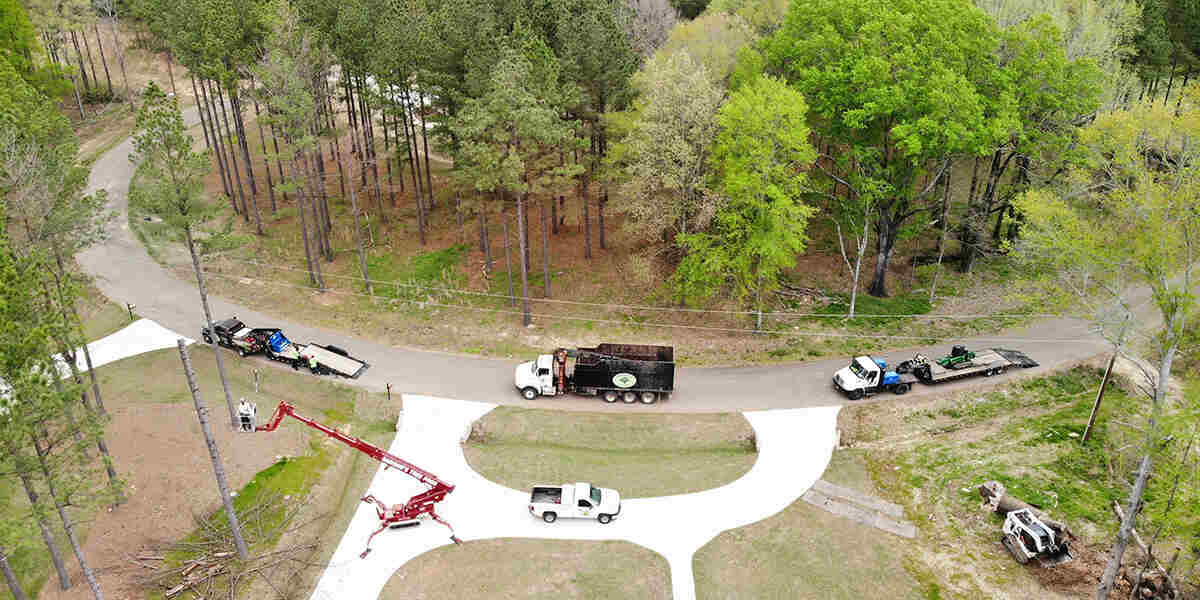
Iron deficiency is a common problem for various trees. The lack of sufficient iron leads to iron chlorosis, a disorder characterized by leaves turning yellow or light green in the early to mid-summer. Discoloration may occur in just a few sections or the entire tree.
As a top-rated tree service company in Brandon, we discuss the causes, effects, and treatment of iron deficiency in trees.
What Is Iron Chlorosis?
Iron chlorosis typically results from an iron deficiency that leads to a string of events that compromise a tree’s overall health. Common culprits of iron deficiency include a high soil pH and low soil oxygen levels. Poorly drained, compacted, or overfertilized soils often have low oxygen levels and alkaline soils.
Trees need iron to manufacture chlorophyll, the characteristic green pigment used in photosynthesis. Because of a lack of chlorophyll, an iron-deficient tree will not produce sufficient energy via photosynthesis and start to decline. As a result, the leaves turn yellow, and the veins darken. In advanced stages, the leaves turn brown and fall off as the limbs begin to die back. Chlorosis will ultimately kill a tree if left untreated for multiple seasons.
Since the symptoms of an iron deficiency may mimic those of other tree health issues, you want to test your tree and soil before starting any treatment.
Prevention and Treatment of Iron Chlorosis
Prevention beats cure. Avoid planting susceptible tree species in high pH (alkaline) and/or poorly drained or compacted soils.
Nonetheless, certified arborists have the technical expertise to handle iron deficiency in trees. Popular treatment options for chlorosis include the following.
Soil Amendment
Various options exist to amend the soil under a tree. For example, you may add a mixture of equal parts iron sulfate and elemental sulfur to the soil. The mixture will neutralize the soil’s pH gradually and improve iron availability.
Be sure to get the mixture exactly right and do it in the late fall or early spring for long-term results. A single treatment can last for as long as four years.
Leaf Treatment
Applying liquid fertilizer directly to the leaves may also help correct an iron deficiency. While this technique may seem easy, its effects won’t last as long as a soil treatment.
Most home improvement stores stock foliar spray. Consider adding a hint of liquid soap to help the treatment adhere better to the leaves.
Trunk injection
Although risky, trunk injections prove to be the most effective at treating iron deficiency. This method involves drilling small holes into the tree’s trunk, usually near the soil surface for maximum effectiveness. Follow label instructions carefully and consider hiring an arborist to do the job.
You also want to ensure the tree has a sufficient water supply before and after the trunk injection.
Contact Your Local Tree Experts
Not every tree care contractor delivers on their promises. Barone’s Tree Pros guarantees the highest level of customer satisfaction. Our services include:
- Debris cleanup
- Stump grinding
- Tree removal
- Tree pruning
Call us at (601) 345-8090 for more information on iron deficiency in trees and tips on how to keep trees healthy. We offer free estimates.